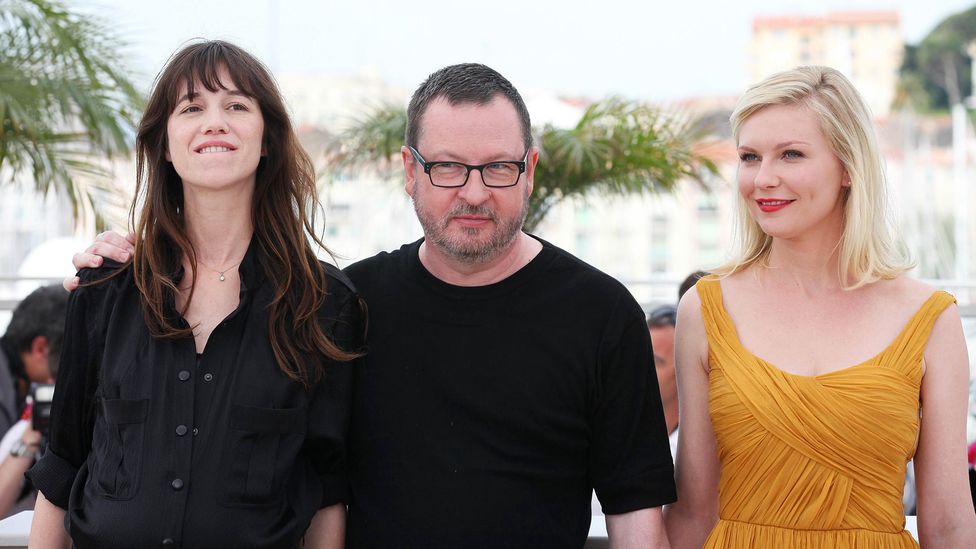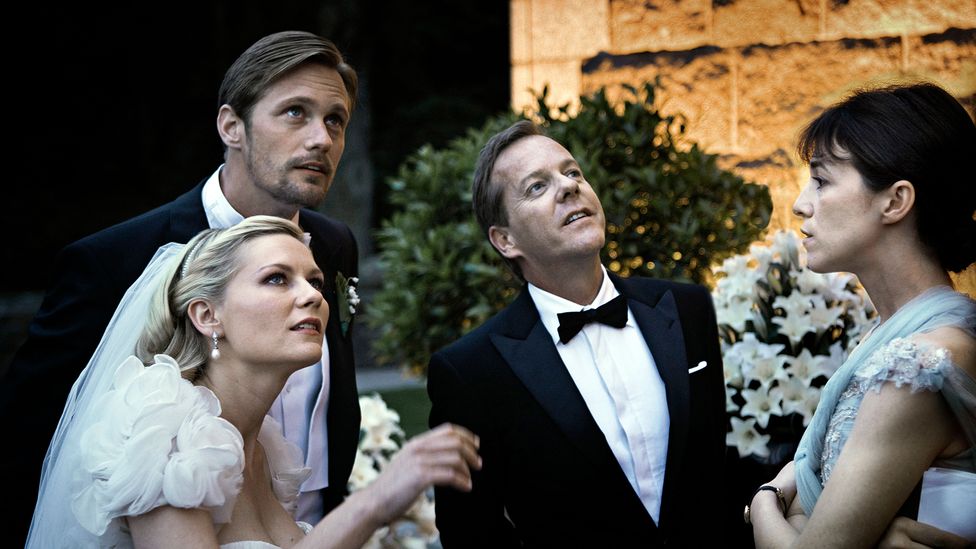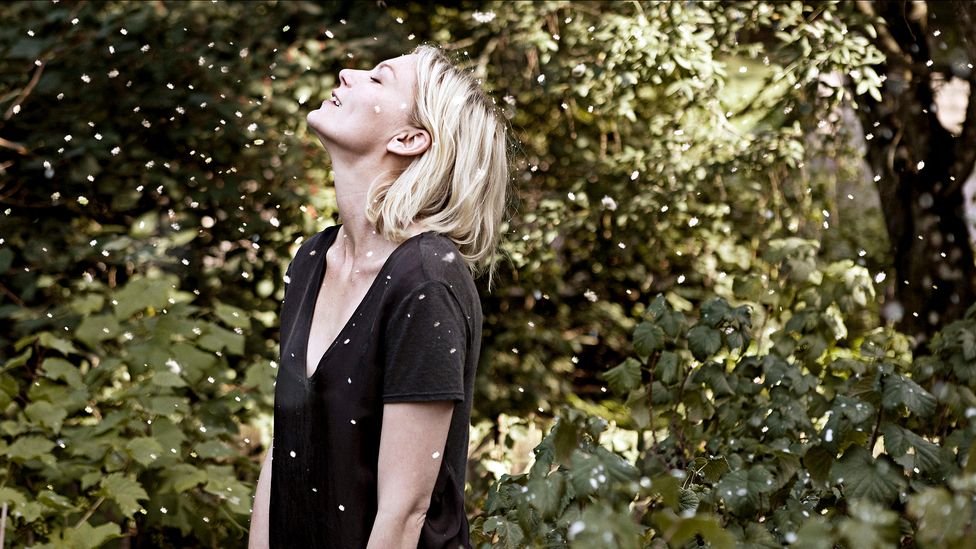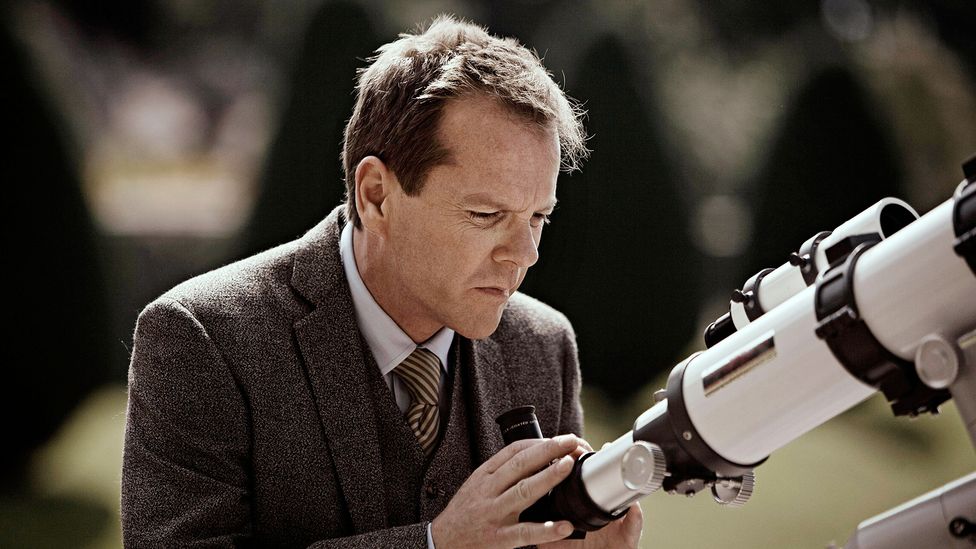In cinema, the bar for what passes as mental-health representation has always been low. Whether depression or something more serious, mental illness has typically been portrayed in a way that is either exploitative, stigmatising or both: most reprehensibly, perhaps, it is still often used as a catalyst for violence, such as in Todd Phillips' recent Joker (2019). But, amid all these problematic portrayals, arguably no film has been more profoundly compassionate in its depiction of a mental crisis than Lars von Trier's 2011 film Melancholia.
More like this:
– How cinema stigmatises mental illness
– The struggle to portray dementia on screen
Ten years ago, this month, the film premiered in Cannes and was immediately mired in controversy when, in the press conference following its first screening, Von Trier said he was a Nazi, causing him to be banned from the festival for seven years. However, now the dust has settled, it deserves to be recognised as an enduring masterpiece, one that came ahead of the cultural discourse's current reckoning with our mental health crisis, and depicted how mental illness can transform the human soul with full-bore cinematic power.

Melancholia premiered at Cannes 10 years ago – but its reception was marred by Lars von Trier's infamous Nazi comments at the press conference (Credit: Alamy)
In fact, Melancholia is the second in Von Trier's so-called depression trilogy, which also included Antichrist and Nymphomaniac: through all three, he purported to be exploring different manifestations of his own experience of depression using female alter-egos. "A psychological disaster movie" and "a beautiful movie about the end of the world" is how Von Trier described Melancholia at the time of its release. It centres on a young woman, Justine (Kirsten Dunst) – Von Trier's surrogate – who experiences a debilitating depression just as the literal end of the world is nigh, with a blue planet, the titular Melancholia, looming in the sky and set to hit Earth.
The film is divided into two parts. The focus of "Part One: Justine" is Justine's wedding day: as the film opens, we are in a stretch-limousine with Justine and her new husband Michael (Alexander Skarsgård), both giggling as their driver tries to make an impossible turn on a narrow country road. Justine and Michael eventually arrive two hours late to their reception. From here, everything goes downhill as Justine's depression engulfs the day to the heartbreak of Michael, dismay of sister Claire (Charlotte Gainsbourg) and cold incomprehension of filthy rich brother-in-law John (Kiefer Sutherland). However 'Part Two: Claire' flips the script: now, with Melancholia coming ever closer and an apocalypse imminent, the focus is on Claire's mounting anxiety, which contrasts with Justine who, in the grip of depression, calmly accepts their fate. "The Earth is evil. We don't need to grieve for it," she says. Her lucidity stems from her despair, which in the face of imminent obliteration, scans like existential courage and a capacity to face the truth. Meanwhile John reveals himself as a coward – the situation, it is suggested, has shaken the truth about everyone to the surface.
What makes it especially unusual for a film that is centrally about despair is its visual splendour. As the film's cinematographer Manuel Alberto Claro explains, some images for the film were storyboarded by Von Trier in painterly detail, homaging other artworks – like Millais' Ophelia, in a vision of Justine floating in a stream in her wedding dress – or arising from its creator's dreams. These were dubbed "Wagner moments" by Von Trier, a reference to the Richard Wagner opera Tristan & Isolde used to deeply moving effect throughout the film, and most strikingly in its prelude, which is comprised of a series of breath-taking micro-scenes all shot in super slow motion, around 1000 frames per second: Dunst-as-Ophelia; a close-up on Dunst as birds fall out of the sky; Gainsbourg running across a golf course clasping her child; a horse sinking backwards into the earth; Dunst in a wedding dress straining against grey wool that binds her to a tree. This visual splendour confers a majesty on the state of depression that conveys, from Von Trier's perspective, its perverse richness as a condition – that people sinking into the quicksand of their own minds and bodies can feel things in extravagant depth. They just often can't communicate it.
Claro tells BBC Culture he had initially been concerned that the movie would be "too beautiful", with its setting at Tjolöholm Castle in Sweden. "Sometimes you read a script, and have a feeling this is going to be what I call 'cinematography candy'. You have a big wedding at a castle, you have the world going down. When you have a setting that is so spectacular, often you fall in love with the setting, instead of falling in love with the characters." However Claro countered this by mostly glueing the camera to Justine and Claire, rushing at their heels like a loyal hound, capturing every expression that flickers across their faces. Then, when there is a wide shot of the surroundings, or a moment of painterliness, the beauty surges in again like a sudden rush of music.
Why it is so powerful
It is a film that, over the decade since its release, has become a kind of talisman for film fans who have experienced depression, such is the visceral power of its depiction. It is so powerful because it refuses to do what people in the grip of mental illness are often pressured to do: make the pain small. There is a defiance to making the pain so big that it literally prefaces the end of the world. The combination of high-concept science-fiction and realistically nuanced characters and relationships is melded together seamlessly.

The film focuses on the wedding day of Justine (Kirsten Dunst) as her depression engulfs events (Credit: Alamy)
Undoubtedly, above and beyond the mastery of Von Trier's filmmaking, Dunst's performance as Justine carries the movie. It's a virtuoso achievement, as primal and physical as it is emotional and sophisticated, and it won her the best actress prize at the 2011 Cannes Film Festival. On the press trail for Melancholia, Dunst referred to her own experience of depression, which she sought help for in 2008. It's an experience that seems to live in the muscle memory of her body.
Part of what makes Melancholia so special is that it continues to serve as an antidote to the poor record of film and TV when it comes to portraying mental health issues. A report into mental health depiction in film and TV published in May 2019 by the USC Annenberg Inclusion Initiative found that the prevalence of mental illness in the top 100 films of 2016 was way out of step with the real world. Out of 4,598 speaking characters, only 18 or 0.4% were depicted with depression, whereas 21.4% of Americans experience a mood disorder in the course of their lives. What's more, in cases where depression was depicted, it was most often shown as having an identifiable cause – like the death of a loved one (Collateral Beauty, Manchester by the Sea) or a physical disability (Me Before You, Miracles from Heaven) – where, in reality, it does not always have a dramatic trigger. The study also showed how it is often included to express signature story themes involving stigmatisation and suicide. In other words, it is still instrumentalised for the sake of a broad narrative beat or sweeping social point. By contrast, Melancholia doesn't use depression as a device: it is instead part of its very texture.
Someone for whom its exploration of depression resonated is journalist and project manager Julie*. Now in her mid-twenties, she saw Melancholia and casually enjoyed it as a teenager but was retroactively awestruck by the parallels when she rewatched it in 2019. Like Justine she had married in a castle, and as with Justine in one particular scene, she found herself at the time of her wedding in a bath, motionless with emotional pain. When Part Two opens, Justine is the walking dead, a state that Julie remembers from her own experiences of depression. "I was catatonic in the sense that everything that I was doing was completely removed from reality to me. It was a very dreamlike state. Whenever I could, I would go back to sleeping or a sort of cocoon." What also stands out for Julie are Justine's moments of impulsiveness, most notably when, after being unable to face sleeping with her husband, she runs outdoors onto the golf course and has sex with a wedding guest she has just met. Julie understands the logic here. "You're abandoning all sense of control and surrendering yourself to the state of not knowing and not understanding what's going on with you. You just want to feel something. You want to feel like you're part of this moment in space in time."
Jamie Graham is another film writer for whom watching Melancholia was incredibly raw; now Editor at Large of Total Film magazine, he recalls first seeing it at its Cannes premiere in May 2011, while privately in the grip of a depression that lasted three to four years. "I can definitely remember having that sense that the person who had written and directed this had that first-hand experience," he tells BBC Culture. "It was a way I hadn't seen depression shown in other films. So it felt very personal to me. Then it made sense when I found out that Kirsten Dunst had also suffered from it because that performance feels so lived in and authentic."

In the film's second part, the end of the world looms – and amid others' anxiety, Justine is calm and lucid (Credit: Alamy)
What rings particularly true to him about Von Trier's portrayal is the way in which he drops us into Justine's depression with no exposition or backstory or attempt to make sense of her state of mind. "People always say to you, 'But why are you feeling like this?' I couldn't put my finger on it. There wasn't something like, you know, my parents had died. It settled on me like this cloud from out of nowhere. The film really understands that. She seems quite a privileged person. She's got this incredible wedding, she's marrying this gorgeous guy who's for the most part is understanding and clearly loves her. She's got a good job. She's got all these things going on. But none of that matters. And when you have depression, nothing matters. Nothing touches it. You can't make a dent in it."
He was also deeply struck by the way in which Von Trier showed the physical side of depression – how it creates a heaviness that settles in the bones, making everything an effort. In Part Two, in another bath scene, Claire tries to coax a naked Justine to step over the porcelain rim into the water. But she can't make it and just sags in Claire's arms. "That really struck me," says Graham, "because when it [the depression] was particularly bad, that's exactly what it was like. And I've never seen that in another film. It's so soul-sapping and overwhelming and all-consuming. It's not just that you're feeling down mentally or glum. It affects your whole body, so that you can barely move. Justine [has a line where she] says she feels she's walking with grey wool attached to her and dragging her back. I used to get into work and if I had like, six emails to answer, it seemed an insurmountable mountain. It's such a basic thing when you're feeling fine; you fire off replies in one minute. But it felt like 'six emails, I can't cope with this, I just want to go home.'"
A lack of understanding
If the film is remarkable in depicting Justine's mental turmoil, then it is equally strong in depicting the lack of understanding those with depression often must contend with – an attitude that is given a mouthpiece in the form of John, Justine's brother-in-law. As he aggressively impresses upon her how much money has been spent on the wedding, his brute logic feels like psychological violence in the face of her helpless vulnerability. For Graham, such a cold attitude was mirrored in real life by some reactions to the film he encountered, coming out of the Cannes screening. "I can remember overhearing other journalists talking about it and they just didn't get [the film] at all. [The attitude was] 'Oh, get over yourself, snap out of it. You've got a lovely wedding put on, you obviously come from a nice family, what have you got to be miserable about?'"
In the final estimation, what is so remarkable about Melancholia's portrayal of depression is not only the details but its entire worldview. It's a film that, like many of Von Trier's works, offers a provocation: the depressed outlook, it dares to suggest, is the correct one. The world is ending. Resistance is futile. All you can do is accept this state of catastrophe and relax into the beauty of this final spectacle.

Justine's brother-in-law John (Kiefer Sutherland) is a mouthpiece for the kind of unsympathetic attitudes those with mental illness can face (Credit: Alamy)
Julie and Graham have are both now feeling mentally healthier, so how is it to go back and watch the film? To Julie, it still offers an unusual form of comfort. "Melancholia has helped me decode what felt like an unsolvable puzzle. And I revisit it often, basking in the knowledge I am not an anomaly." She acknowledges that its logic has the potential to be ruinously seductive "like a hand pulling you towards what you fought so hard to escape but to me, it is comforting," she says. "Reassuring, even. And I am certain I will go back to it time and time again." For Graham, rewatching it is more disturbing, however. "I find it a distressing film that gets under my skin, probably because it's so close [to what I felt]. The way Von Trier depicts the end of a world, when they're sitting around and the planet is getting closer, you can really feel the terror."
In the 10 years since Melancholia was made, the conversation around mental health has seemingly moved on, with more individuals using their platforms to confide experiences of mental illness in the hope of doing their bit to destigmatise and educate. Yet the power of Melancholia remains stronger than ever, because it allows us the kind of primal connection to the subject that is a marker of great art.
*Julie's name has been changed as she wishes to remain anonymous
Details of organisations offering information and support with mental health are available at bbc.co.uk/actionline
Love film and TV? Join BBC Culture Film and TV Club on Facebook, a community for cinephiles all over the world.
If you would like to comment on this story or anything else you have seen on BBC Culture, head over to our Facebook page or message us on Twitter.
And if you liked this story, sign up for the weekly bbc.com features newsletter, called The Essential List. A handpicked selection of stories from BBC Future, Culture, Worklife and Travel, delivered to your inbox every Friday.
https://ift.tt/3w0vhX1
Film
Bagikan Berita Ini














0 Response to "Is Melancholia the greatest film about depression ever made? - BBC News"
Post a Comment